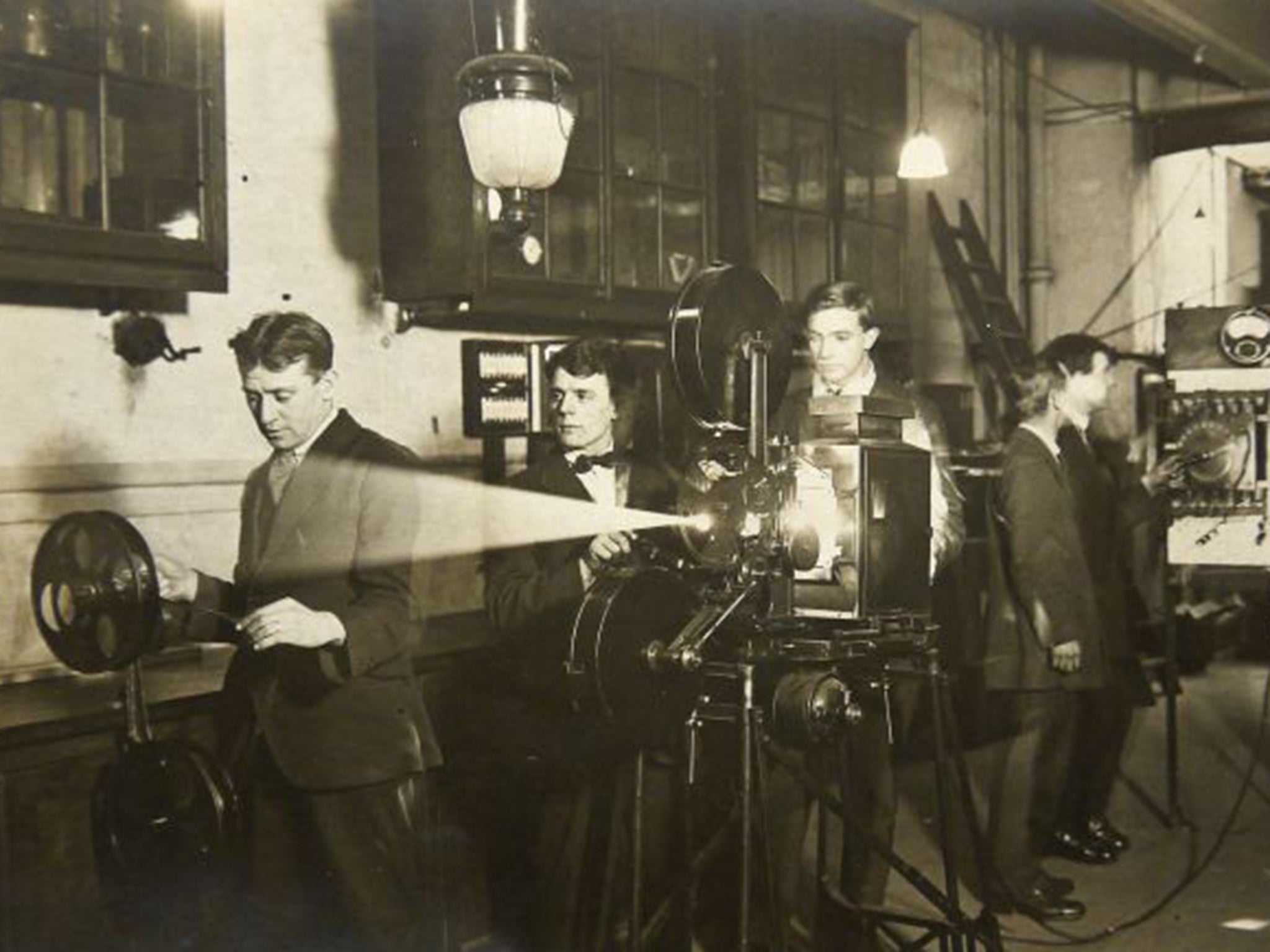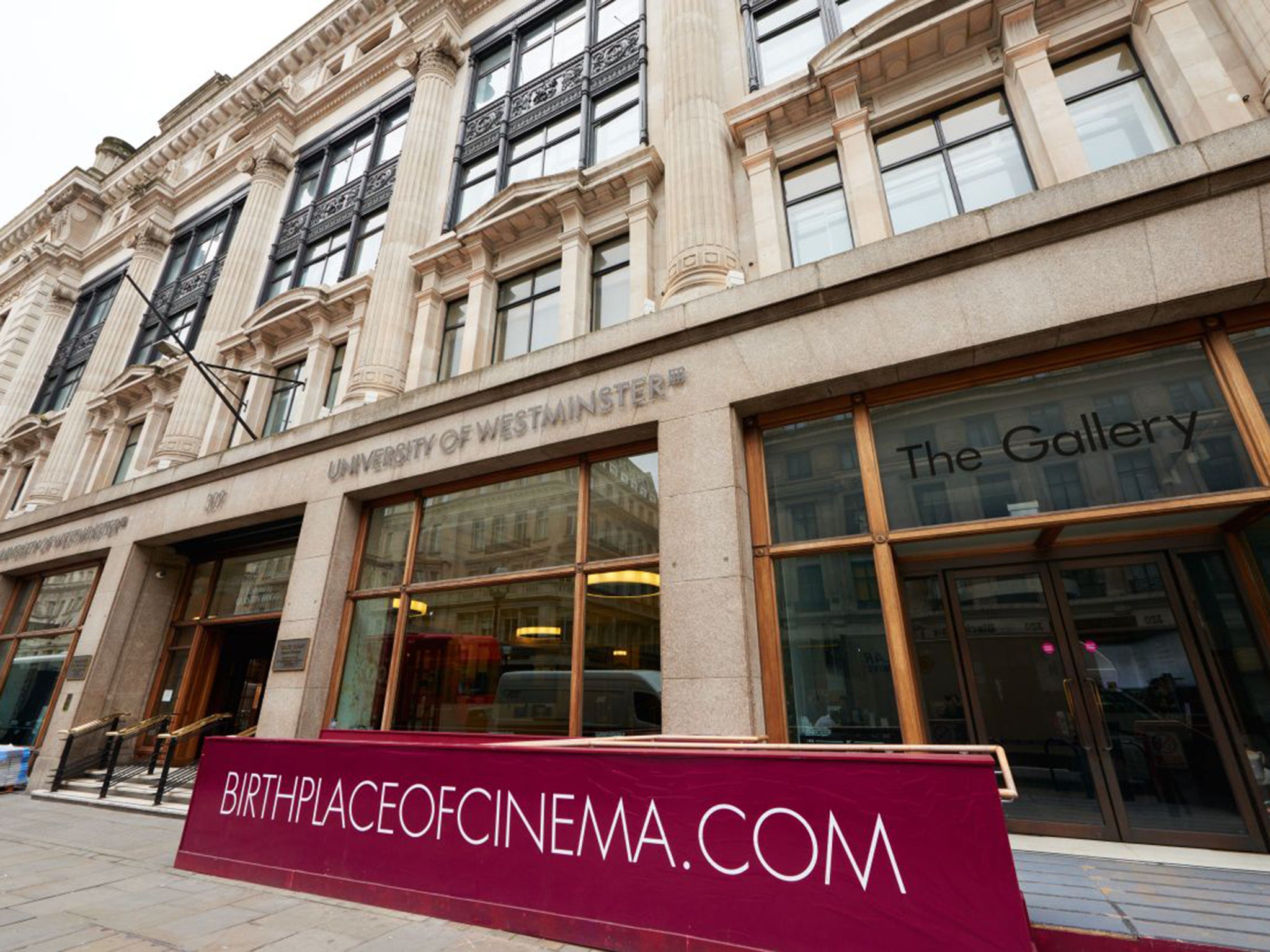Britain's first cinema flickers back to life following £6m refurbishment
A historic site where the Lumière brothers revealed their new invention to the nation has been restored to its former glory with the help of the Heritage Lottery Fund

Your support helps us to tell the story
From reproductive rights to climate change to Big Tech, The Independent is on the ground when the story is developing. Whether it's investigating the financials of Elon Musk's pro-Trump PAC or producing our latest documentary, 'The A Word', which shines a light on the American women fighting for reproductive rights, we know how important it is to parse out the facts from the messaging.
At such a critical moment in US history, we need reporters on the ground. Your donation allows us to keep sending journalists to speak to both sides of the story.
The Independent is trusted by Americans across the entire political spectrum. And unlike many other quality news outlets, we choose not to lock Americans out of our reporting and analysis with paywalls. We believe quality journalism should be available to everyone, paid for by those who can afford it.
Your support makes all the difference.Two months before the reopening of a theatre dubbed “the birthplace of British cinema”, archives have revealed the extraordinary history of a building used to screen the UK’s first moving image – and its first X-rated film.
The Regent Street Cinema in London was used as a lecture hall by the University of Westminster after screenings ended in 1980. It has been restored to its former glory, at a cost of £6m, thanks to a £1.5m Heritage Lottery Fund grant and money raised through a “name a seat” project.
Shira MacLeod, the cinema’s director, said it will be the only movie theatre in the UK to show moving image media “from 16mm and 35mm to Super 8 film, to the latest in 4K digital film”.
As a result, it will be able to showcase films that have been archived for many years.

In 1838, 309 Regent Street opened as the Polytechnic Institution, a place where members of the public could pay to see new scientific experiments. Attractions included demonstrations of underwater breathing apparatus and a magnified view of Thames water revealing “all the creepy crawlies inside it”, says cataloguing archivist Claire Brunnen, who opened up the archives to The Independent on Sunday.
The theatre, added on to the premises in 1848, was initially used for science lectures. It also played host to magic lantern shows and Pepper’s ghost, an illusion technique popularised by the British scientist John Henry Pepper. Audiences would apparently see a ghost drinking a glass of water on stage.
The venue was later bought by the philanthropist Quintin Hogg, who changed its name to the Regent Street Polytechnic and used it to educate young working people. By 1896, the reputation of the institution was such that the Lumière brothers chose it as the UK venue on a world tour designed to showcase their film projector, the cinematograph.
An audience of 54 people paid a shilling (5p) each to watch the UK’s first moving film, staring in wonder and recoiling in alarm as a train hurtled towards them.
A less well-known aspect of the cinema’s story is its use as a training and rehabilitation centre for soldiers injured during the First World War. Many of the soldiers were amputees and were trained in disciplines such as tailoring, photography, electrical and motor repairs, commerce and architecture.
Travel films and documentaries were shown at the theatre during the 1920s, including titles made by the pioneering wildlife photographer Cherry Kearton, the first man to bring cinematograph pictures out of Africa. He used sound effects recorded at London Zoo to accompany his silent films of animals in their natural habitat.

Watch Apple TV+ free for 7 days
New subscribers only. £8.99/mo. after free trial. Plan auto-renews until cancelled

Watch Apple TV+ free for 7 days
New subscribers only. £8.99/mo. after free trial. Plan auto-renews until cancelled
The UK’s first X-rated film premiered at the cinema in 1951. The French production La Vie Commence Demain was a post-apocalyptic film showing graphic images of the effects of an atomic bomb. It attracted an X-rating due to a scene showing artificial insemination which would be “rather tame” for modern audiences, according to Ms Brunnen.

The restored cinema, which also houses the original organ used to accompany silent movies, will feature “cutting-edge British and world cinema, retrospectives and classic repertory titles, documentaries, experimental moving image and animation”, Ms MacLeod said.
The first film, to be shown on 7 May, when the cinema opens to the public, will be Only Angels Have Wings, the 1939 Howard Hawks film starring Cary Grant, Jean Arthur and Rita Hayworth.
Join our commenting forum
Join thought-provoking conversations, follow other Independent readers and see their replies
Comments